For more than two thousand years, humans have been trying to solve all the problems of this serious skin disease, but there are still many unknown things. According to statistics, this disease affects 4% to 7% of the population, and men and women are equally susceptible. The first symptoms of psoriasis usually appear in adolescence and accompany him throughout his life, then gradually disappear and disappear completely, and then intensify.
Psoriasis can be curedModern medicine has made many achievements in the treatment of this chronic skin disease and can provide patients with a decent quality of life.
Causes of psoriasis
Psoriasis is a chronic skin inflammatory process. Modern medicine refers to it as an autoimmune disease (related to allergies to one's own tissues). There are many causes and triggers of psoriasis, so many theories about its origin have been proposed.
self-immune
This is the main theory, because the immune system is known to respond positively to certain types of skin exposure. The skin of psoriasis patients is very sensitive to mechanical, physical and chemical influences. Not only the epithelial cells react to this effect, but the entire immune system also reacts.
Impaired cellular immunity: The ratio between the various subtypes of lymphocytes responsible for the formation of a normal immune response. Therefore, in psoriasis, the number of T lymphocytes of helper cells increases-helper cells that regulate immunity, while the number of T lymphocytes that suppress excessively strong immune responses decreases. Lymphocytes and some other cells produce cytokines-active substances that stimulate the immune response. Humoral immunity is also impaired, the unbalanced development of antibodies (immunoglobulins) in the serum, and the appearance of antibodies against the patient's body tissues.
Inflammation starts in the context of activation of T lymphocytes, but the reason for the activation has not yet been determined. During the research process, there is also the question of how to suppress the autoimmune response without harming the patient.
exchange
The imbalance of metabolism has an important impact on the skin and immunity. In patients with psoriasis, the metabolism is accelerated, and a large number of toxic free radicals and other toxins that support the inflammatory response appear. Metabolism is disturbed:
- Protein-Susceptibility CDSN gene stimulates the synthesis of keratinocytes, which makes the body sensitive (sensitization); the content of albumin in the blood decreases and the content of globulin increases; this condition is called dyslipidemia and further enhances sensitivitySex.
- Fatty-The content of lipids and cholesterol in the blood increases; the main use of plant foods and the general reduction of calorie content in the daily diet can reduce the activity of psoriatic inflammation;
- carbohydrate-Almost always violated;
- Exchange of vitamins and minerals-The content of vitamin C in the skin increases, and the content of vitamin C, A, B6, B12, iron, copper and zinc in the blood decreases.
Infectious
This theory was relevant at the beginning of the last century and the middle of the last century. Certain bacteria (streptococci), fungi and viruses are considered to be the pathogens of psoriasis. These theories have not yet been confirmed. However, dermatologists have noticed that any acute infection process or permanent infection can cause recurrence. Virus theory occupies a special position. Recent studies have shown that retroviruses (viruses containing RNA-HIV, etc. ) have a genetic effect on the formation of psoriasis susceptibility genes.
Genetic
The propensity for autoimmune reactions is inherited. If a person’s relatives suffer from psoriasis, then the likelihood of suffering from the disease will increase many times. There are some genes that are susceptible to psoriasis (the local complex PSORS1-PSORS9, PSORS1 is particularly active, it contains the genes HLA-C, HLA-Cw6, CCHCR1 and CDSN, which are responsible for the development of the disease). Genes influence metabolism, immunity and the development of autoimmune processes. However, the existence of this gene does not completely guarantee the development of the disease. The influence of motivating factors is very important.
Neurogenic
Prolonged stress, high neuropsychological stress, diseases of the autonomic nervous system (invasion of the walls of blood vessels and internal organs) can lead to the development of psoriasis, leading to imbalances in the endocrine system and impaired metabolism and immune processes.
endocrine
Endocrine disorders of psoriasis are very common, mainly stimulating. There is no clear connection between the two. Dermatologists point out that patients usually suffer from thyroid, adrenal and pituitary dysfunction. Women have irregular menstruation, and men have sexual function.
Psoriasis symptoms
The main symptom of psoriasis is a rash. However, there are other signs. The initial manifestations usually appear in adolescence or childhood, and are based on hormonal imbalance, vegetative dystonia, and prolonged stress.
The disease begins with a feeling of constant fatigue and poor mood. It is characterized by small pink structures (acne) that tower over the surface, powdered from the top, with white flakes. They are surrounded by bright towering edges.
The components of the rash will grow and merge into large, weird-shaped patches. The base of the papules is an inflammatory infiltrate. According to the nature of the rash, psoriasis can be divided into:
- View-Components with a diameter not exceeding 1mm;
- teardrop-Papules droplets to 2 mm;
- Coin shape-Round pimples coins with a maximum size of 5 mm.
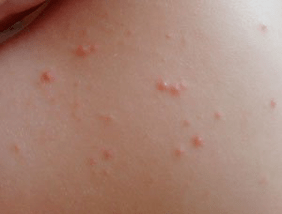
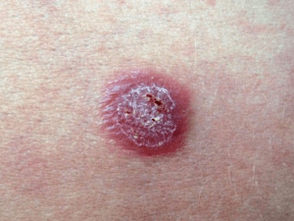
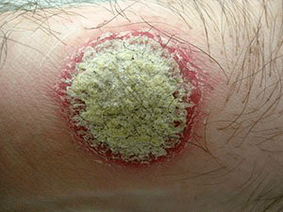
Features of the rash:
- Stearin stain-If scratched, it is the surface of the pimples;
- Terminal film-Thoroughly remove the surface of the pimples on the balance, we will see a transparent film;
- Blood Dew (Ospitz phenomenon)-After scratching the film and destroying its integrity, we will see tiny blood drops sprayed on the surface.
Stages of psoriasis
The disease is divided into three stages:
- progress-The number of the first parts of the rash increases and all new areas are captured; the rash also appears when scratching the itchy skin or exposed to some external irritants (Kebner phenomenon); in the early stages of psoriasis, The papules began to merge into large patches.
- stable-There are no new elements, the elements that appeared earlier will not fade away;
- Returning-The rash becomes pale and its roots become less dense; the rash gradually subsides, and the process usually starts from the center, so the plaques can be ring-shaped. If the plaques in psoriasis dissolve from the periphery to the center, they will gradually decrease in size and form a white ring around them-Voronov's pseudo-atrophic margin; where there is a rash, the white pigmented area still exists-Psoriasis leukoplakia.
Sometimes, in all three developmental stages, papules appear on the skin at the same time. There are also summer and winter forms, which can exacerbate the condition in summer or winter.
Psoriasis contagious?
Many studies have confirmed that this is not an infectious disease. If infectious pathogens are involved in its development, it can only be achieved through general effects on metabolism, immunity and genetic equipment.
Patients often ask:
- How is psoriasis spread?
Psoriasis does not spread from person to person.
- Is psoriasis genetic?
The answer is still no, but there is a genetic predisposition, that is, the form of metabolic characteristics and immune system function, and this genetic predisposition will be passed on to close relatives.
Types of psoriasis
In this chronic skin disease, the nature, location, and damage to other organs and systems may be different. Based on these signs, several diseases can be distinguished.
Simple (vulgar, plaque)
the most common. Its symptoms are papules, characteristically bright pink, covered with white scales. Downstream, plaque psoriasis is divided into the following forms:
- simple-If the skin covered by the lesion does not exceed 3%; in the progressive phase, papules increase, but then they rapidly undergo reverse development.
- Ease-Skin rashes account for 3% to 10%; papules are large and merge into plaques;
- Heavy-Failure accounts for more than 10%; there are many rashes, merge, and form various shapes.
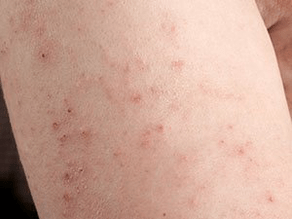


Psoriasis vulgaris occurs in an alternating form of relapse and remission, but there is also a continuous process.
Elbow psoriasis
This is one of the manifestations of mild plaque inflammation. A distinctive feature of elbow psoriasis is the persistent presence of one or more "duty" plaques on the extension side of the elbow joint. If these elements are injured, the condition worsens.
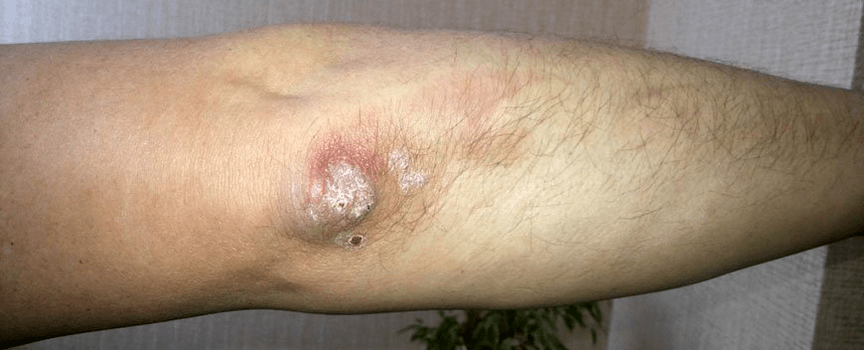
Intestinal psoriasis
In the development of leguminous psoriasis, bacterial (most often streptococcus) and viral infections are very important. Occurs in childhood. Inflammation after infection. Streptococcus secretes toxins (antigens-foreign bodies in the human body) that bind to tissue proteins. Produce antibodies and develop autoimmune inflammation.
At first it was keen. Small red papules appear on the skin of the limbs (rarely on the body and face), with scaly tears on the surface. Injuries in the rash area, the formation of small erosions and sores, the risk of infection increases.
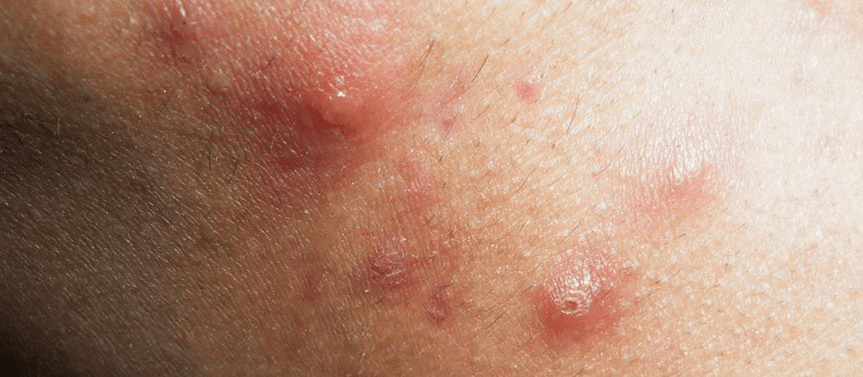
Psoriasis will soon enter a subacute and chronic course. Relapse is replaced by remission, and it is possible to recover independently or turn into adult disease.
Palm-Psoriasis
It develops in people engaged in manual labor, is accompanied by severe itching, and almost always complicates the nails. There are subspecies:
- Sector sector-There are large elements on the surface of the palms and soles, which are covered by white scales and merge into fan-shaped patches; this kind of hand psoriasis is more common;
- round-Annular scaly elements on the surface of the palms and soles of the feet;
- Horny-Characteristic is the growth of coarse epithelium and the formation of corn;
A separate subspecies is pustular psoriasis on the palms and soles of Barber. The area under the thumb of the limbs was covered with vesicles and pustules (with purulent contents), and severe itching appeared. The abscesses merge, then dry, and form a crusty. In other parts of the human body, characteristic psoriasis elements will develop. This disease often spreads to the nails.
Varicose veins can maintain and exacerbate psoriasis on the legs. In this case, the rash mainly occurs on the calf.
Nail psoriasis
Nail damage can be independent or complex. Typical symptoms:
- Small dimples of different depths appear on the nail plate; similar nail lesions have been found in other dermatitis, but in psoriatic lesions, they are deeper and slightly painful when compressed.
- Spontaneous, slow and painless separation of nails (strong echo);
- Irregular bleeding from the toenails, especially if the patient is wearing tight shoes;
- Bronchitis-white turbidity and irregularities on the nail plate; a depression will form in the center of the nail and the nail will become like a spoon.
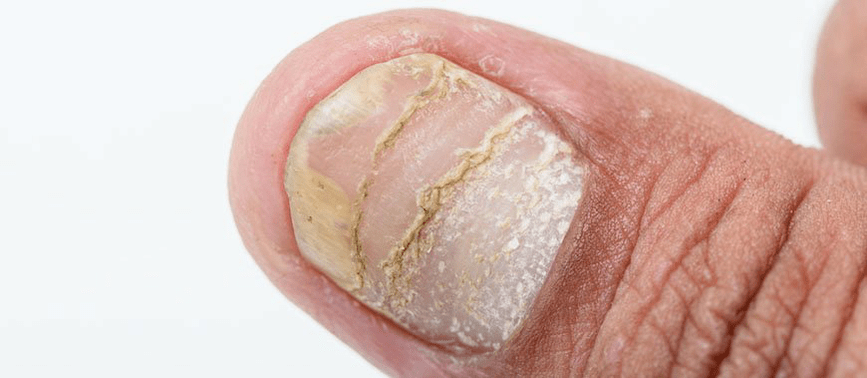
Sometimes, the wrist roller is affected by the transformation of inflammation to other tissues (psoriatic parathyroiditis).
Scalp psoriasis
Here, the disease progresses independently or as part of the general pathological process. Characterized by exudation, a crust is formed on part or the entire surface of the head. Hair growth is not affected at the same time: psoriasis on the head does not impair the function of the hair roots. But exudation creates the threat of infection and subsequently damages the hair follicles.
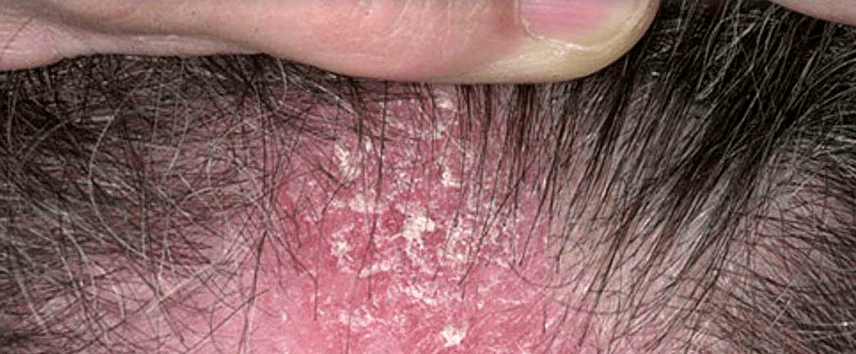
It flows in the form of waves, then subsides as the crust disappears, and then intensifies again with severe itching, often leading to neurosis in patients.
Seborrheic psoriasis
Seborrhea is a disease caused by the dysfunction of skin glands that produce sebum. Produce viscous oil, irritate the skin and cause inflammation-dermatitis.
Seborrheic psoriasis spreads quickly to the entire head, covering it in the form of a lid, and is accompanied by severe itching. In the area behind the ear, weeping and infection sometimes occur. The scalp is covered with dandruff and crusty, which sometimes looks like a psoriasis crown.
Psoriasis on the face
Usually, psoriasis on the face is located in the nasolabial triangle, eyelids, above the eyebrows, and behind the ears. The fused components of the rash create extensive redness and swelling. If the sebaceous glands function abnormally, the process is usually accompanied by crying, knots and an increased risk of infection.
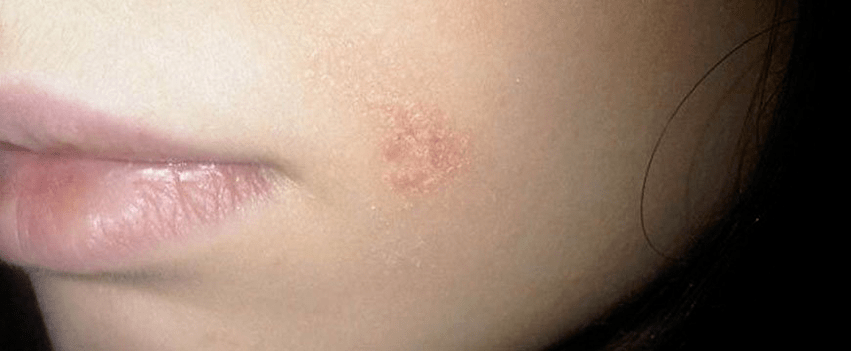
Genital psoriasis
This is not an isolated process. As the genitals fail, the characteristic psoriasis rash is spread all over the body, so it is not difficult to recognize the disease.
Psoriasis on the penis in men and psoriasis on the labia majora and adjacent skin areas in women manifest in the form of oval, pink scaly papules, slightly elevated above the skin. There is almost no itching. Sometimes, the process spreads to the mucous membranes and looks like vulvovaginitis in women and balanitis in men.
In obese people, an atypical psoriasis rash can be observed in the folds next to the genitals (groin, buttocks). Here, a deep red area with a mirror-like surface is formed without signs of peeling due to constant wetting.
What is the hazard of psoriasis and whether it needs treatment

The danger is that psoriasis can take a wide range of severe forms, and the rash will account for more than 10% of the skin. This stage of the disease is difficult and will recur, the components of the rash will be injured and wet, and the infection will often merge. Only timely treatment of psoriasis can prevent its spread.
Sometimes, the disease is complicated by inflammation of the joints formed by psoriatic arthritis, and psoriatic arthritis can severely impair joint function.
Under the background that the systemic autoimmune process has a significant impact on the patient’s condition, other autoimmune diseases (rheumatoid arthritis, certain types of arthritis, Crohn’s disease, etc. ) often develop, as well as severe cardiovascular diseasesDisease, digestive system and nervous system response.
If the treatment of psoriasis is not started on time, the patient's condition will rapidly deteriorate and lead to disability.
There are also complications such as psoriasis erythroderma, which develop when psoriasis is improperly or inadequately treated and inflamed skin comes into contact with various irritants. The skin is bright pink, and there are clear boundaries between the affected area and the healthy area, as well as flake-like peeling areas of different sizes. Such patients require urgent medical care.
Can psoriasis be treated?
Yes, and very successful, but there is no guarantee of complete recovery.
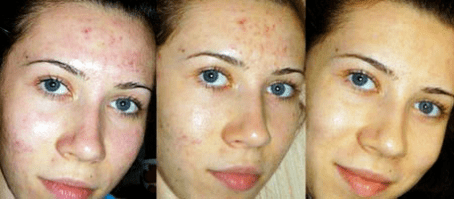
treatment method
Autoimmune inflammation requires individual choice of complex therapies, lifestyle changes, nutrition and elimination of all bad habits. Modern medicine has put forward three basic principles for the successful treatment of psoriasis:
- Strictly follow the algorithm of prescription therapy;
- Regularly monitor the treatment effect;
- The prescription drugs were corrected in time, but the efficacy was insufficient.
Nutrition for psoriasis
Psoriasis has no special eating habits, but nutrition is very important. Therefore, when prescribing complex treatments, nutrition recommendations must be made:
- Determine the increased sensitivity of the body to certain foods and exclude them from the diet;
- Preference for fresh vegetables, non-acidic fruits and berries, cooked and roasted lean meats, drink plenty;
- What not to eat for psoriasis:
- Products containing essential oils-onions, garlic, radishes;
- Caffeinated beverages (strong tea, coffee), alcohol;
- Everything is more salty, sour, sweet and rich;
- Products that promote human body sensitization (allergic reactions)-orange fruits, honey, nuts, cocoa, eggs;
- Do not eat animal fat products.

Diet for oregano psoriasis
This diet was developed by American doctor John Pegano, but it has not yet received official medical approval. The principle behind establishing the Bacano diet for psoriasis is related to alkalizing the body by choosing the right diet. According to this principle, all products are divided into:
- Alkali formation (two-thirds of the daily diet)-non-acidic fruit and berry mixtures as well as fruit juices, vegetables (excluding those that cause increased gas formation);
- Acid formation (one-third of the diet)-meat, fish, dairy products, beans, peas, potatoes, cereals, sweets and pastries.
It is recommended that patients drink non-gas mineral water, up to 1. 5 liters of drinking water per day and other drunk liquids (such as tap water, juice, etc. )
medical treatement
Mild psoriasis can be treated with topical medications. Severe and rapidly progressing diseases are mainly treated in hospitals with prescription drugs with general (systemic) effects.
External psoriasis treatment
The drug is selected by a dermatologist. For psoriasis vulgaris with dry-shrinking plaques, ointments are suitable, if exudation (seborrheic), creams and medicinal solutions should be used. In order to avoid the organism's resistance (drug resistance) to a certain drug, it will change over time.
In the acute (progressive) phase, the following external treatments are performed:
- Substance with softening effect-boron petrolatum, 2% salicylic acid ointment;
- An effective psoriasis non-hormonal ointment containing active zinc pyrithione; they inhibit infection and have the effect of inhibiting cell growth (inhibiting tissue proliferation);
- External medicine containing glucocorticoid (GCS) hormone;
- Combination medicine with calcipotriol (an analog of vitamin D3) and the corticosteroid betamethasone; it perfectly inhibits the inflammatory process.
External treatment of stable psoriasis:
- Ointment that can dissolve scale (decomposition of keratin) and has anti-inflammatory effects -5% naphthalene, boron naphthalene, tar naphthalene
- Corticosteroid drugs.
Topical treatment of psoriasis in the resolution stage:
- The same keratin ointment, but with a higher concentration: 10% naphthol ointment;
- Ointment based on vitamin D3 analogues-within 6-8 weeks; inhibits inflammatory processes and skin rashes.
To treat nail psoriasis, special varnishes that inhibit the development of pathological processes are used. It is recommended to use moisturizing gel to treat the phalanx around the toe.
Systemic treatment of psoriasis
- Drugs to reduce inflammation and poisoning-calcium chloride, sodium thiosulfate, tannins in the form of injections;
- Tablets for psoriasis, which can inhibit the proliferation process (epithelial cell proliferation)-cytostatics that inhibit the activity of the immune system, vitamin A analogs, corticosteroids;
- Biological preparations containing human monoclonal antibodies of the IgG class can act on certain links of inflammation by inhibiting the synthesis of cytokines; it is a very effective modern drug and is administered by injection;
- Psoriasis vitamins help restore the metabolism and keratinization of epithelial cells; doctors have prescribed vitamin A, E, D3, and B groups.
Folk remedies for psoriasis
Any treatment for psoriasis, including the use of folk remedies, can only be prescribed by a doctor. Self-treatment can lead to the opposite effect: the spread of disease.
As part of complex therapy, the following methods can be used:
- grease-Processed products of industrial oil; to prepare ointment, you need to buy medical solid oil in the pharmacy; formula: add 50 grams of honey and half a pack of baby cream to 0. 5 kg of solid oil; the procedure is carried out every day; in the pharmacy, you canPurchase ready-made preparations based on sterols.
- baking soda-Folk remedy for psoriasis, can help clean the shell and relieve itching; soda water application formula: take 60 grams of soda water, dissolve it in 0. 5 liters of water, soak the gauze in the solution, fold it into several layers, and then apply it to the lesion 20Minutes; After the operation, blot the skin dry and apply any emollient ointment on it; treat psoriasis with soda water every day.
- mummy-It has obvious anti-inflammatory effect and can relieve itching well; oral administration once a day, 0. 2 g each time for two weeks; topical mummy solution for treatment; twice a day for dry itchy plaques; head psoriasisThe treatment is to rinse the scalp with a mummy solution after washing.
- sea salt-Reduce inflammation and relieve itching; sea salt bath: take 1 kg of salt, dilute with two liters of water, and add to the bath; take a bath for 15 minutes, then rinse the solution under a warm shower, dry the body with a towel and apply moisturizing ointment; Take a bath no more than twice a week to treat psoriasis;
- clay-It has an obvious cleansing effect and can absorb surface toxins caused by inflammation and improper metabolism; helps dryness, eliminates crusts and itching; you can take any clay, but it is best to buy blue clay at the pharmacy; the clay block must be sufficiently dry, Break it with a hammer, dilute with water and let it stand for several hours; put the resulting plate-like clay on a napkin (maximum 3 cm thick) and apply it to the inflammation foci for 3 hours; treat psoriasis with clay every other day.
Important note: The use of folk remedies to treat psoriasis at home should be done with caution and strictly in accordance with the doctor's prescription. Such treatment will help one patient, while in another patient it may cause inflammation to worsen and spread rapidly. Therefore, if the patient's condition deteriorates in the context of treatment, the treatment must be stopped immediately and a doctor should be consulted.
Home treatment for psoriasis
When treating psoriasis at home, it is important to follow dietary recommendations, maintain a healthy lifestyle, rule out bad habits and strictly follow all prescriptions from a dermatologist.
How to treat psoriasis at home? Some patients try to use various unconventional methods (enemas, etc. ) to cleanse toxins and toxins. This can lead to the exact opposite result: the work of the digestive tract will be destroyed and deterioration will begin. Modern medicine recognizes to clean the body and get rid of bad habits with proper nutrition.
It is very important to follow all the doctor's prescriptions and pay attention to the way the prescribed therapy works. If the effect is not good, the doctor will replace the treatment to achieve the maximum treatment effect.























